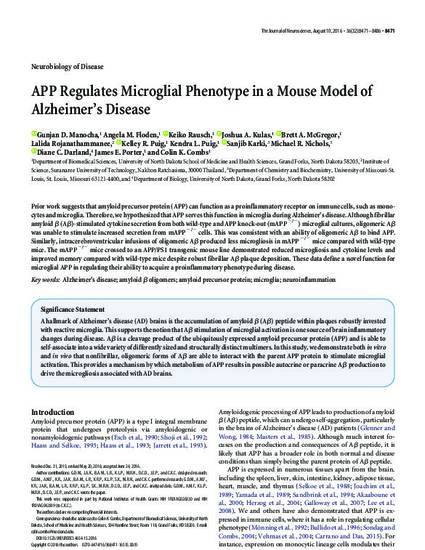
Article
APP Regulates Microglial Phenotype in a Mouse Model of Alzheimer's Disease
The Journal of Neuroscience
(2016)
Abstract
Prior work suggests that amyloid precursor protein (APP) can function as a proinflammatory receptor on immune cells, such as monocytes and microglia. Therefore, we hypothesized that APP serves this function in microglia during Alzheimer's disease. Although fibrillar amyloid β (Aβ)-stimulated cytokine secretion from both wild-type and APP knock-out (mAPP−/−) microglial cultures, oligomeric Aβ was unable to stimulate increased secretion from mAPP−/− cells. This was consistent with an ability of oligomeric Aβ to bind APP. Similarly, intracerebroventricular infusions of oligomeric Aβ produced less microgliosis in mAPP−/− mice compared with wild-type mice. The mAPP−/− mice crossed to an APP/PS1 transgenic mouse line demonstrated reduced microgliosis and cytokine levels and improved memory compared with wild-type mice despite robust fibrillar Aβ plaque deposition. These data define a novel function for microglial APP in regulating their ability to acquire a proinflammatory phenotype during disease.
Disciplines
- Biochemistry,
- Biology and
- Chemistry
Publication Date
August 10, 2016
DOI
10.1523/JNEUROSCI.4654-15.2016
Citation Information
Gunjan D. Manocha, Angela M. Floden, Keiko Rausch, Joshua A. Kulas, et al.. "APP Regulates Microglial Phenotype in a Mouse Model of Alzheimer's Disease" The Journal of Neuroscience Vol. 36 Iss. 32 (2016) p. 8471 - 8486 Available at: http://works.bepress.com/michael-nichols/13/
